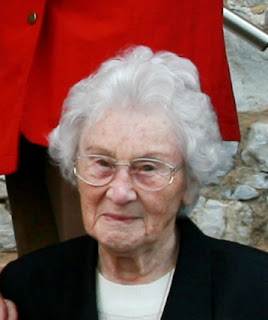 |
| Caron's First Christmas Carol and Aaron with Taffy (the dog) and Caron |
Our family has always had strong Christmas traditions. Family is always the focal point. Every Christmas morning from the year I was born
and lasting 40 years, my parents hosted a casual Christmas breakfast for family
and friends. People would drop by on
their way to and from other places. We
served a continental breakfast: breakfast
breads, grapefruit, juices, coffee, egg casseroles in later years, and lots of Christmas
cookies.
My mother had a guideline for Christmas gifts for her
children she used over the years and I adopted:
something to read, something to play with and something to wear.
I do not know if my sisters will remember but in 1965 we
were living in Wheaton Illinois at the end of a dead end road in an unincorporated
area – a rural feeling atmosphere. Dad
was working hard to make his new business a success, traveling a lot, and Mom
told us (or maybe just me) that there was not a lot of money for Christmas this
year and not to expect too much.
I did not think too much about it until Christmas morning. Donna and I had a few gifts under the
tree. We each got a book and a new
sweater/skirt outfit. I do not remember
what Amy received, but she was still very young and probably had an outfit and
a book as well. After we opened the
gifts under the tree and from our Christmas stockings, Dad told us to go get
the stuff for breakfast from the garage refrigerator. He insisted that both of us go do this chore
together. Imagine our surprise when we
opened the door to the attached garage and saw shiny new bicycles with our
names on them sitting there! We were
very excited as the bikes would give us more freedom to get around and to get
to school. While it may not have been my
best Christmas ever, it certainly is one of my most memorable!
 |
| New Bikes! Amy, Donna and Caron |















